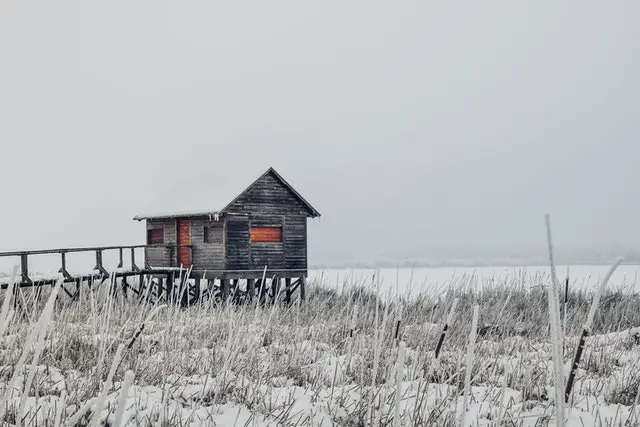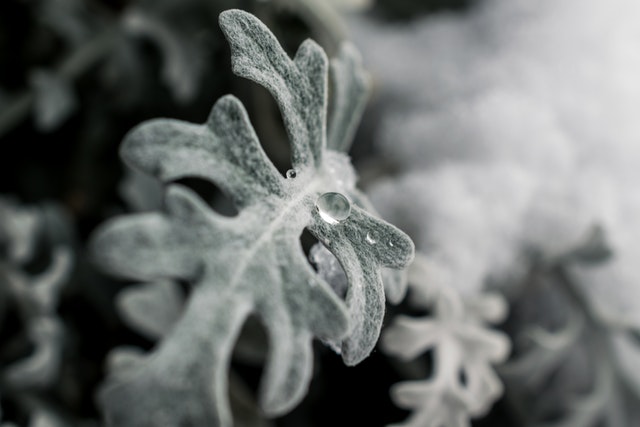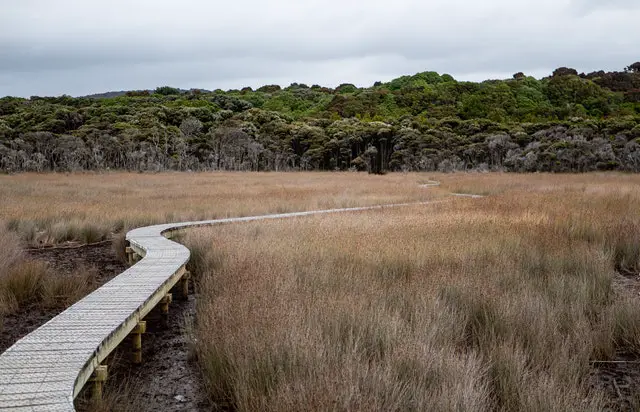One of the reasons many homeowners love fescue grass is that they are easy to maintain and also drought-tolerant. Moreover, the grass’ green color creates an attractive environment for sporting activities.
It’s not uncommon to see brightly-colored lawns gradually changing to brown during the winter months. But does fescue grass turn brown in winter?
Fescue grass does not turn brown in the winter months if they have the right nutrients. In other words, healthy fescue grass always retains its green color during winter.
Little or no nitrogen can make your fescue appear yellowish. In some cases, heavy snow or frost can cause your fescue to turn brown.
Of course, brown fescue lawns can make your home environment look dull. Therefore, it is important to take the right action to ensure your fescue lawns remain green, attractive, and healthy.
Apart from lack of nitrogen, why does your green lawn change to brown? And how do you care for the grass during winter?
Keeping your fescue grass a lush and vibrant green is easy, but how do you ensure it stays that way during the winter months? In this article, we’ll explore the factors that turn fescue grass brown, as well as how to maintain its green color even during the cold months.
Continue reading to find out!
Why Does Fescue Grass Change To Brown In Winter?

Defrosting of the winter snow and rainwater can cause water to gather underneath the fescue grass. This can result in the growth and spread of fungus if you don’t have good drainage on your lawn.
Once you notice white, or purple patches on your lawn, it’s a sign that fungi are rapidly growing on them. Sometimes, you may also notice circles around the infected parts, which means the fungus is developing on the roots.
Most times, brown patches on your fescue are a sign that there’s a problem with its roots. Hence, caring for the grass as soon as you notice this discoloration can prevent them from dying.
How To Care For Fescue Lawns During Winter

Follow these 5 simple tips:
1. Mow Your Fescue Lawn
Constantly mowing your fescue during winter will allow it to survive during the summer months. Besides, it will also help the grass to remain healthy and strong throughout the warm months.
While mowing the grass, make sure it is not too low so that the young grass can develop.
It is best to mow your lawn every six to seven days until the fescue stops growing. Mowing your lawn the right way helps the young grass to develop and also prevents the growth of weeds.
Use mowers with sharp blades only to prevent exposing your grass to brown patch infection.
2. Get Rid Of Debris
Remove all dead leaves, and other debris from the fescue lawn as often as possible. If covered in snow or frost, this debris can choke your grass, thereby exposing them to diseases. Besides, debris and other objects on the lawn can prevent young grass from developing.
So, it is important to keep your fescue lawn clean at all times to maintain its green color.
3. Water The Lawn

Same as other types of grass, fescue needs watering from time to time. When you notice the day is mild with no sign of a hard freeze overnight, water the lawn. But if the weather forecast predicts a frosty night, water the fescue grass the evening before.
A moderate amount of water helps the moisture in the soil to dry up overnight. It also creates friction around the fescue blades, thereby preventing them from being damaged.
While watering your fescue is good, do not overwater it to prevent damaging your lawn.
4. Do Not Walk On The Grass
Once it begins to snow, avoid walking on the lawn until the snow melts completely. Even if you have to walk on the lawn, do not walk in places covered in snow.
Walking on the fescue lawn can destroy the young grass that is still actively growing. Likewise, the lawn can turn brown from green if its blades get damaged from constantly stepping on them.
5. Use Fertilizers
During fall, provide your lawn with enough nutrients that will support its growth during winter. This way, you wouldn’t have to worry about your fescue grass turning brown throughout the winter months.
Preferably, apply fertilizers that contain nitrogen to the grass to keep your lawn healthy and beautiful. Adding fertilizers with potassium and phosphorus to the fescue grass also helps to develop its cells and roots. But before you use these fertilizers, follow the instructions on their labels.
If the ground is filled with snow, do not fertilize it as the nutrients will not enter the grass root.
See a similar post: What’s The Difference Between Potting Soil And Garden Soil?
How To Treat Brown Patches In Fescue Grass
Apply fungicides to the lawn every month to prevent the brown patches from spreading. Be careful while using chemicals on your fescue grass as some of them can be dangerous. Read the instructions on the chemical label to prevent damaging your soil permanently.
Monitor the weather forecast to know when there will be little or heavy rainfall. This will guide you on the day to apply the fungicide to work effectively. Remember that heavy rainfall can wash the fungicide away from the soil.
Frequently Asked Questions
Does Tall Fescue Go Dormant?
Yes, tall fescue can go dormant when temperatures drop below 50°Celsius. This means tall fescue will stop growing when it becomes dormant. Heavy snow and frosting often damage fescue grass.
Frost causes the tip of the fescue blade to become yellow, making the whole lawn look yellowish and dull. But during spring, the temperature becomes more favorable for the Tall Fescue. Hence, the yellow grass will grow out and fresh ones will develop.
What Type Of Grass Turns Brown In Winter?
Warm-season grasses usually turn brown in the winter months. They thrive well in the hot sun and always look attractive during summer. These grasses also grow perfectly in temperatures between 75° and 90° Fahrenheit.
But during winter, the grass goes dormant and changes to brown. Interestingly, they won’t turn green until the warmer months in spring.
Some of the warm-season grasses are Zoysia grass, Bermuda grass, Bahia grass, St. Augustine grass, and centipede grass.
Does Fescue Grass Spread?
Yes, fescue grass spreads but not in the same way as other grasses. Warm-season grasses are also known as “spreading grasses” due to how they spread quickly. These grass grow either with their above-ground stem called stolons or underground roots called rhizomes.
On the other hand, fescue grass belongs in the category of “bunch grasses”. They grow in bunches that don’t spread quickly. Moreover, grasses like fescue do not have firm underground stolons or roots.
Therefore, it takes a longer time for the fescue grass to spread across a lawn compared to the spreading grasses. Regardless, they grow perfectly in areas with enough sunlight.
Final Thoughts
Everything being equal, your fescue grass does not turn brown in winter. However, factors such as lack of nitrogen, heavy snow, or frost can discolor your grass.
Remember to mow your lawn, water from time to time, and use fertilizers. In addition, avoid walking on the fescue and get rid of debris on your lawn during winter.
To prevent brown patches on the lawn, use fungicides according to the instructions on their label.
It is important to take care of your fescue grass before winter. When the cold months arrive, your lawn will remain as green and beautiful as ever.

Hey, I’m Lisa and I’ve been an avid gardener for over 30 years. I love writing, talking and living in the garden! Feel free to connect with me on my socials below

